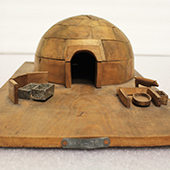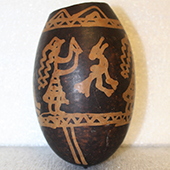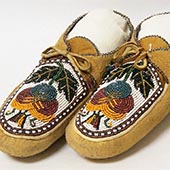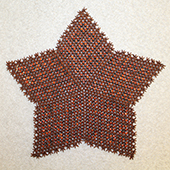Representing Individuals
Lokono, Suriname
In the early 18th century, Herrnhut’s Moravian leaders were looking for a new place to settle. Political instability threatened Moravian refugees in Saxony, but there was ample land offered to those willing to colonize the Americas. Suriname, a Dutch colony in South America, was initially considered for a permanent Moravian settlement, but the tropical climate and Dutch policies proved to be too. Instead, three young men were sent in 1735 to establish a mission.
Over the next two centuries, Moravian missionaries proselytized among Suriname’s European, African, and indigenous residents. They were particularly interested in the indigenous Lokono people. Missionaries published the first Lokono dictionary in 1803. Fitting with the Moravian practice of teaching the Bible in common languages, they also published selections from the New Testament in Sranan, a creole language. The Moravians recognized the importance of language in understanding the indigenous Surinamese as individuals.
Missionaries often collected physical objects to portray the individuals they worked with to home communities. Unlike language that had to be translated, objects represented a direct connection between Euro-American Moravians and indigenous converts. Objects sent out of Suriname were put on display to garner support for mission work. Missionaries often collected the personal items of the people they proselytized to. These objects typically fit into conventional ethnographic categories such as tools, weapons, and dress.
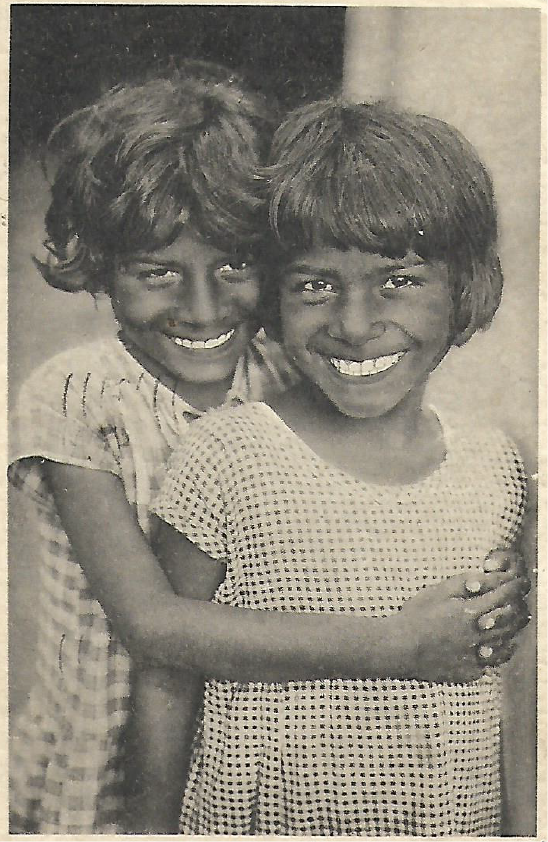
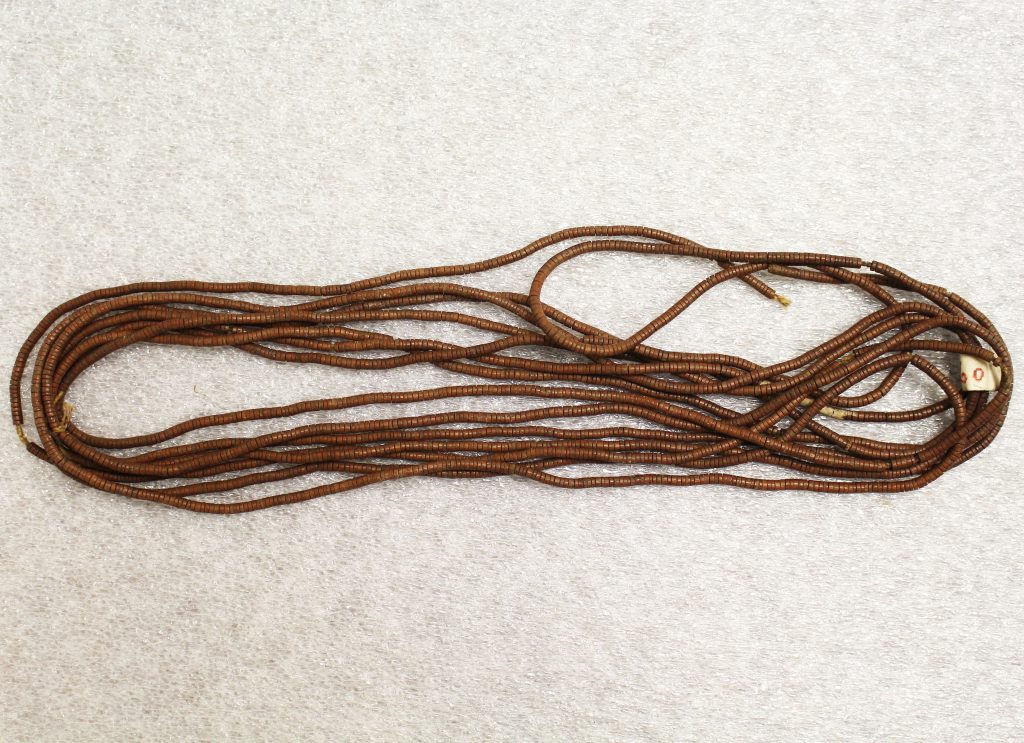
Beads (1984.E.0569)
Clothing is an intimate type of object. Since it worn on the body, it is hard not to imagine the individual who might have worn it. This string of wooden beads would have likely been attached to the fringe of Lokono clothing, which was primarily decorative in the tropical environment. Aprons made entirely of strung beads were also worn for special occasions to show off an individual’s status and sense of style.
Adze (1984.E.0190)
Basket (1984.E.0458.a-b)
A person’s tools say a lot about them. A scraper, a tool used to prepare hides, suggests skill in hunting and in using the tool to make necessary goods. Similarly, a basket demonstrates skill in weaving. Though the missionaries would have seen these tools as rudimentary, they would also have acknowledged the industriousness of the individuals that used them.
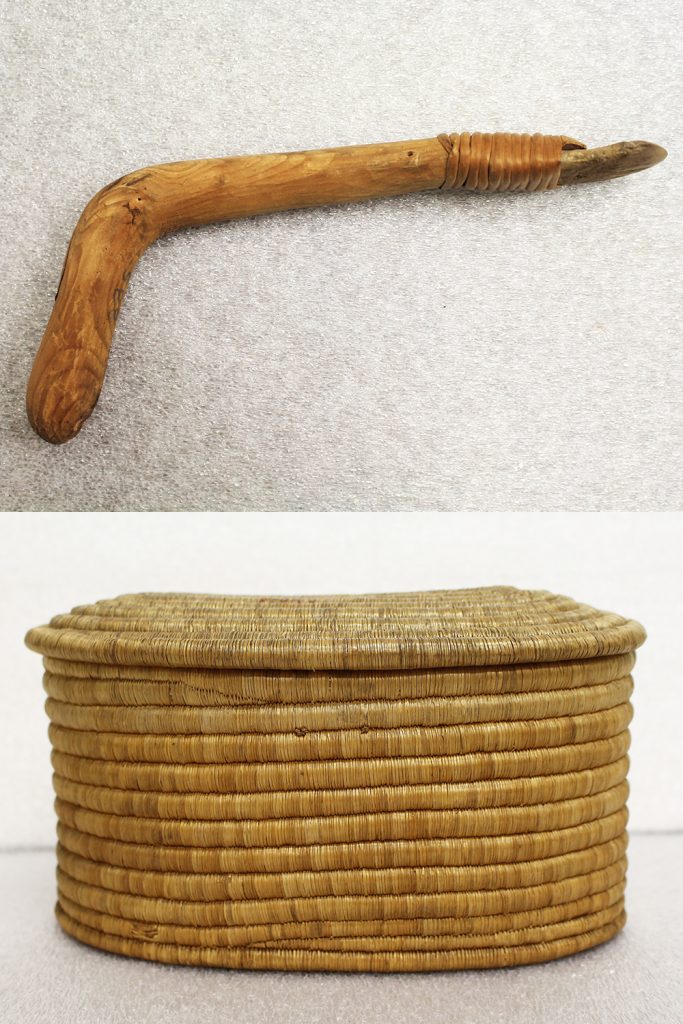
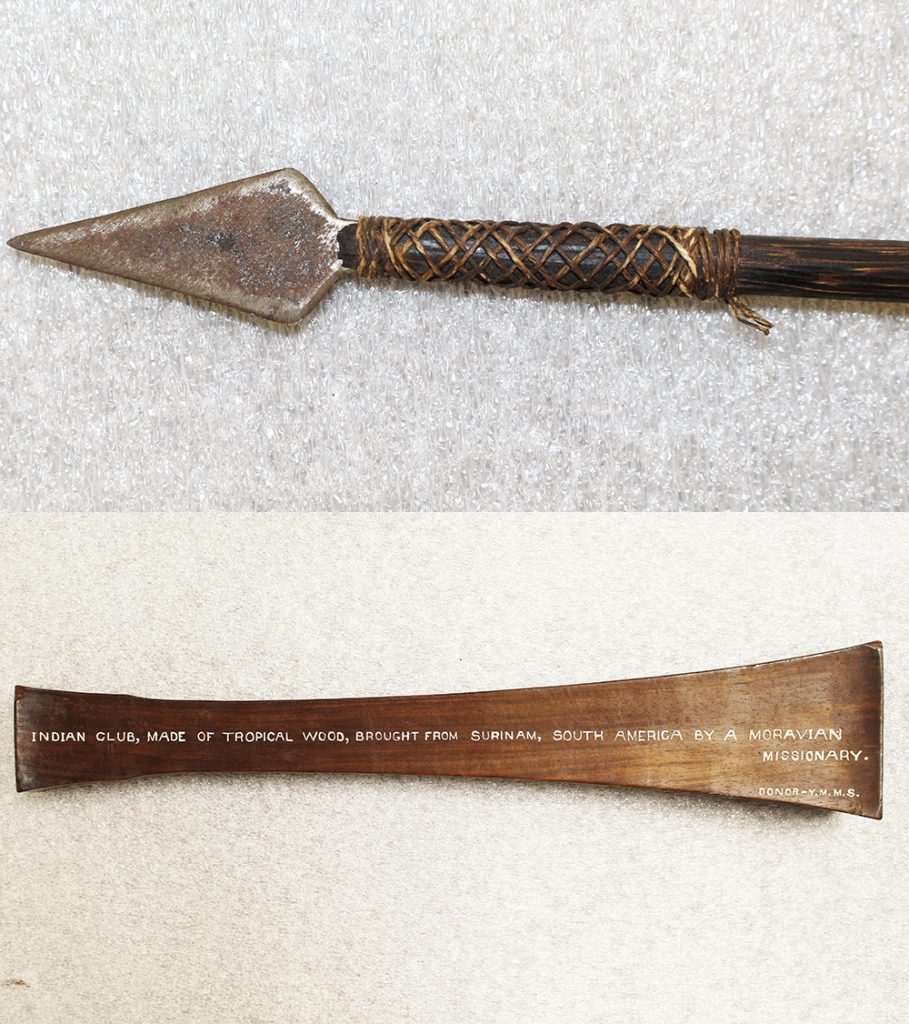
Spear (1984.E.0428)
Club (1984.E.0191)
Weapons make a powerful impression. The Moravians came to Suriname at a time when colonialism was exacerbating tensions between skirmishing factions. For the missionaries, these objects were a reminder of the dangers of Suriname, something they frequently wrote about. For the Lokono, they were an extension of themselves as objects necessary for survival. The choice of weapon was a matter of individual preference.
Explore the other sections of the exhibit below
